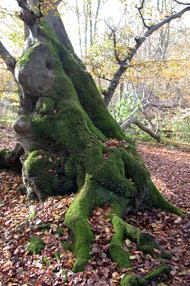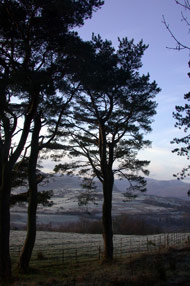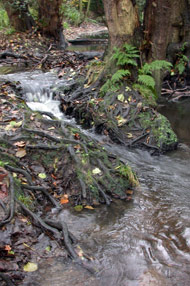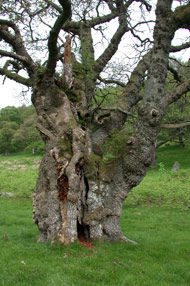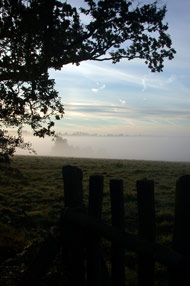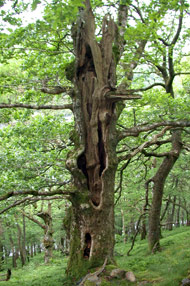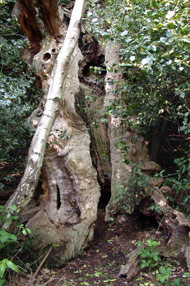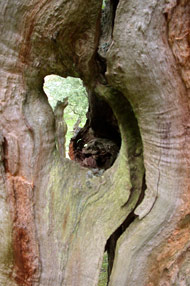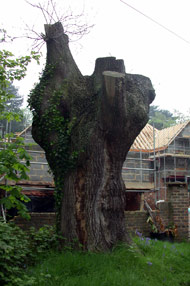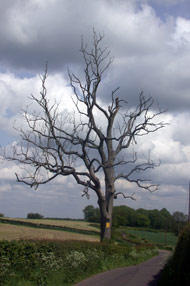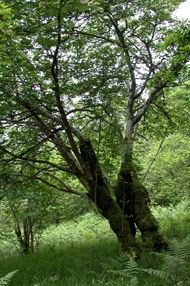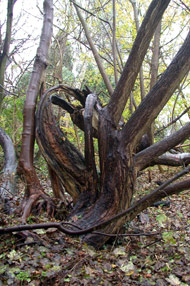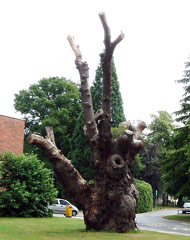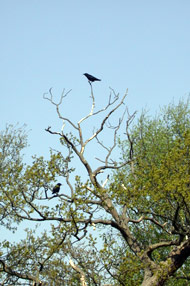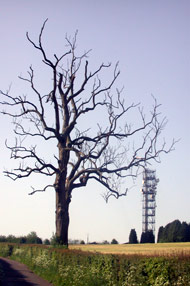There is a selection of documents available to view here belonging to and created by companies other than ArborEcology Ltd, details for these companies are mentioned in the documents themselves. All require an Adobe Acrobat Reader to view them, you can get the latest version for free here.
Ancient & Veteran Trees:
• Veteran Trees Management Handbook
• The Ageing Process of Trees
• Wood Pasture
• Conservation and Protection of Ancient and Veteran Trees
• Management of Ancient and Veteran Trees
Tree Ecology:
• Bats
• Badgers
• Dead and Decaying Wood Habitats
• Disorders, Pests & Diseases (Trees)
• Fungi / Mycology
Planning & Development:
• Trees
• Ecology
Woodland Management & Forestry:
• The Wooded Landscape
• Woodland Restoration
• Woodland Trust Urban Woodland Management Guides
• Woodland Trust Strategic Publications
• Woodland Management Techniques
ANCIENT & VETERAN TREES
VETERAN TREES MANAGEMENT HANDBOOK (2000)
As part of the Veteran Tree Initiative led by English Nature Helen Read was commissioned to pull together current experience and best practice in the management of old pollards and other veterans. This handbook will be of value to anyone who has an interest in or needs to manage old trees.
Acknowledgements - 23 kb)
Forward and Contents - (71 kb)
Chapter 1 - Introduction to the handbook - (39 kb)
Chapter 2 - What are veteran trees and why are they important? - (347 kb)
Chapter 3 - How a tree grows, becomes old and decays - (257 kb)
Chapter 4 - Management of Veteran Trees - (554 kb)
Chapter 5 - Management of land around Veteran Trees - (314 kb)
Chapter 6 - Managing Veteran Trees of landscape and cultural interest - (140 kb)
Chapter 7a - Management of Veteran Trees for other organisms - (349 kb)
Chapter 7b - Management of Veteran Trees for other organisms - (395 kb)
Chapter 7c - Management of Veteran Trees for other organisms - (936 kb)
Chapter 7d - Management of Veteran Trees for other organisms - (800 kb)
Chapter 7e - Management of Veteran Trees for other organisms - (880 kb)
Chapter 7f - Management of Veteran Trees for other organisms - (665 kb)
Chapter 8 - The next generation of Veteran Trees - (125 kb)
Chapter 9 - Dealing with conflicting management priorities - (98 kb)
Chapter 10 - Public access and Veteran Trees - (44 kb)
Chapter 11 - Legal aspects of management for/of Veteran Trees - (65 kb)
Chapter 12 - Keeping records - (63 kb)
Chapter 13 - Funding and advice - (67 kb)
Glossary - (104 kb)
Appendices - (354 kb)
References and further reading - (169 kb)
BACK TO TOP OF PAGE
THE AGEING PROCESS OF TREES
Estimating the Age of Large and Veteran Trees in Britain (1998) – 196 K
A method of age estimation is proposed that avoids any damage to vulnerable specimen trees. It relies upon comparison with lists of measurements of known dates.
BACK TO TOP OF PAGE
WOOD PASTURE
Ancient Wood Pasture in Scotland (2001) – 3.2 MB
A 54 page, report that provides an introduction to the concept of wood pasture and looks at examples in Scotland. A historical review of ancient trees and their context within the modern landscape.
Wood-Pasture and Parkland Habitat Action Plan (2002) – 604 K
English Nature report (Number 539) on the Third Advisory Group Annual Meeting October 2002
BACK TO TOP OF PAGE
CONSERVATION AND PROTECTION OF ANCIENT AND VETERAN TREES
Fire Protection of the Ancient Tree at Ham Green, Bristol (2003) – 124 K
A short descriptive account of a contract completed by Treework Environmental Practice to protect an ancient oak tree in Ham Green, which had been repeatedly targeted by local arsonists.
The Ancient Tree Campaign Mapping a future for ancient trees (2004) – 632 K
A 9 page leaflet produced by the Woodland Trust to support their campaign to map the location of ancient trees.
Ancient trees in the UK – Securing their future. (2004) – 1.4 MB
A 6 page leaflet produced by the Woodland Trust and Ancient Tree Forum to promote their campaign to increase the protection for ancient and veteran trees in the UK.
Ancient Woodlands and Ancient Trees: A Cultural and Conservation Heritage (2002) – 500 K
In this article first published in Cumbrian Wildlife No 64 2002, Alan Shepley extols the cultural and conservation importance of Cumbria’s arboreal heritage.
BACK TO TOP OF PAGE
MANAGEMENT OF ANCIENT AND VETERAN TREES
Putting Pruning Into Context (2003) – 988 K
Article written by Andrew Cowan of ArborEcology Ltd, and published in essentialARB issue 9. The article questions some of the basic principles of arboriculture, tree care and cultivation. It considering pruning, questioning its benefit and the impact it might have on a tree’s physiology and ecology.
Coronet Cutting and Retrenchment Pruning – Natural Fracture Pruning Techniques (2003) – 204 K
A paper written by Neville Fay in 2003 as an explanation of pruning techniques used in the management of ancient and veteran trees.
Lightning Strikes and Trees (2003) – 372 K
A paper written by Neville Fay in 2003 summarising Treework Environmental Practice’s survey work, and exploring the possible role of lightning strikes as an evolutionary influence on the tree biodiversity.
Hazards From Trees (2000) – 8.3MB
A 35 page guide produced by the Forestry Commission to provide advice for woodland managers where public access and rights of way place responsibilities on land owners and managers. This Practice Guide indicates the responsibilities of owners and managers for assessing the risk of hazards from trees, and considers what inspection procedures might be appropriate.
Survey methods and Development of Innovative Arboricultural Techniques at Key UK Veteran Tree Sites. (2004) – 372 K A paper written by Neville Fay for The Trees of History, Proceedings of the International Congress, University of Torino, Italy. The text extols the need for a multidisciplinary approach to tree management where it is important to consider their ecology in co-evolutionary terms. The interaction between trees, fungi and other dependent organisms are considered and discussed in terms of maintaining functioning tree-ecosystems.
BACK TO TOP OF PAGE
TREE ECOLOGY
BATS
Giving Bats a Good Innings: European Protected Species with International Appeal (2002) – 1.3 MB
An article written by Andrew Cowan of ArborEcology Ltd, and published in November 2002. The text provides a background to bat ecology, their use of arboreal habitats and the legal protection afforded to them in the UK, and Europe.
Publications produced by English Nature
English Nature - Bats in roofs: a guide for surveyors (2002) – 364 K
Produced by English Nature as a simple guide to building surveyors who may come across signs of bats during the cause of their work inspecting residential and commercial structures.
English Nature - Managing landscapes for the greater horseshoe bat (2000) – 568 K
A useful 8 page guide to habitat management of one of Britains rarest and most endangered bat species. The publication highlights the specific nature of the bats landscape use for commuting, foraging and roosting.
Bat Mitigation Guidelines (2004) – 524 K
This 74 page publication provides the most comprehensive guidance available when considering bats and development. It is essential reading for anyone dealing with licenses under the Habitats Regulations 1994.
BACK TO TOP OF PAGE
BADGERS
Tree work around badgers, and badger setts (2002)
An article written by Andrew Cowan ArborEcology Ltd, and published in essentialARB, Issue 7 2002. The text explains the implications of the legal protection afforded to badgers and the importance of planning tree work operations carefully to take into consideration the proximity of badger setts.
Forestry Operations and Badgers (1995) – 428 K
Forestry Commission, 30 page, Forestry Practice Guide 9, explaining the implications of the legal protection afforded to badges and how it affects the planning of woodland management.
Badgers and development (2003) – 779 K
A 16 page, guide produced by English Nature to provide background information for developers on the legal protection for badges and how it may impact on the planning and management of a development site.
BACK TO TOP OF PAGE
DEAD AND DECAYING WOOD HABITATS
Decaying Wood : Recycling in Arboreal Ecosystems (2003) – 1.1 MB
An article written by Andrew Cowan of ArborEcology Ltd, and published in essentialARB issue 8 spring 2003. The text promotes the importance of dead wood and is value as a decaying habitat that supports a divers array of organisms over a considerable length of time.
Life in the Deadwood: A guide to managing deadwood in the Forestry Commission forests (2002) – 1.8 MB
This 19 page guide was produced by the Forestry Commission to promote the retention of dead wood to enhance the biodiversity. Decaying wood provides important habitat for small vertebrates, invertebrates, fish (wood in water courses), cavity nesting birds, and a hose of lichens and bryophytes, polypores and other saproxilic fungi.
BACK TO TOP OF PAGE
DISORDERS, PESTS AND DISEASES (TREES)
Dieback of Pedunculate Oak (1999) - 5.7 MB
A 6 page Forestry Commission Information Note produced to provide some background to the syndrome affecting Quercus robur in the UK and Europe. ‘Dieback’, or the similar term ‘dying back’, has been used in relation to diseased pedunculate oak for the last 75 years, and the history of the problem is outlined in the text that also evaluates available data on possible causes.
Sudden Oak Death Caused by a New Species, Phytophthora ramorum (2001) – 124 K
A 2 page, leaflet produced by the United States Department of Agriculture (Forestry Services) providing background information about the impact of Sudden Oak Death.
BACK TO TOP OF PAGE
FUNGI / MYCOLOGY
Fungi – Life Support for Arboreal Ecosystems (2001)
An article written by Andrew Cowan ArborEcology Ltd, and published in essentialARB, Issue 4 – 2001. The text describes how fungi are fundamental to the success and health of almost every ecosystem on earth, both terrestrial and aquatic, and essential to the sustainability of biodiversity.
BACK TO TOP OF PAGE
PLANNING AND DEVELOPMENT (TREES, ECOLOGY)
TREES
Over the garden hedge (2001) – 476 K
An 8 page leaflet produced by the Office of the Deputy Prime Minister (ODMP) as guidance to neighbours in dispute over a garden hedge.
BACK TO TOP OF PAGE
ECOLOGY
Sites of Special Scientific Interest (SSSIs) - England’s special wildlife and geological sites (2002) – 0.9-MB
A 16 page, guidance document produced by English Nature to provide information to land owners responsible for the management of SSSIs.
England ’s best wildlife and geological sites: The condition if Sites if Special Scientific Interest in England in 2003 – 4.1 MB
English Nature 118 page report into the condition of SSSI’s in England. In a response to the governments commitment to reducing the rate of biodiversity loss by 2010, this report provides the first definitive assessment of the state of England’s SSSIs.
BACK TO TOP OF PAGE
WOODLAND MANAGEMENT & FORESTRY
THE WOODED LANDSCAPE
An Introduction to New Landscape Ecology Research to Enhance Biodiversity in British Forests (2000) – 196 K
This 6 page Forestry Commission Information Note describes the importance of incorporating ecological knowledge in forest planning and uses information form a landscape ecology research project, part of its Biodiversity Research Program, to improve understanding of ecological processes in woodland and forest landscapes in Britain.
Scotland’s Trees, Woods and Forests (2002) – 2.3 MB
Scotland is the most wooded country in Britain, in area accounting for almost half of all Britain’s woods and forests. This 44 page publication looks at Scotland’s woodland and forestry heritage, including some of it’s remarkable trees, including the Fortingall Yew, in Perthshire, reckoned to be the oldest living think in Europe.
BACK TO TOP OF PAGE
WOODLAND RESTORATION
Restoration of Native Woodland on Ancient Woodland Sites (2003) – 1.9 MB
Forestry Commission Practice Note (58pages with photographs and diagrams) providing practical advice on woodland management, and techniques used in the restoration of arboreal ecosystems.
Site Assessment Guide – Restoration of Native Woodland on Ancient Woodland Sites (2003) – 488K
An 11 page guide produced to accompany the Forestry Commission Practice Note Restoration of Native Woodland on Ancient Woodland Sites.
BACK TO TOP OF PAGE
WOODLAND TRUST URBAN WOODLAND MANAGEMENT GUIDES
Urban Woodland Management Guide 3 – Complaints and Queries (2002) –156 K
This 17 page, guide is one of a series produced by the Woodland Trust as a resource for managers of urban woodlands.
Urban Woodland Management Guide 5 – Thinning and Felling (2002) – 760 K
This 30 page, guide is one of a series produced by the Woodland Trust as a resource for managers of urban woodlands.
BACK TO TOP OF PAGE
WOODLAND TRUST STRATEGIC PUBLICATIONS
Woodland biodiversity: expanding our horizons (2000) – 1.1 MB
This document explains our development of a series of simple yet meaningful measures of woodland biodiversity potential for measuring improvements in woodland biodiversity and the relative merits of possible future activities. They can be re-interpreted to be equally relevant to other habitats.
Seeing the woods for the trees: the Woodland Trust's approach to conservation– 1.0 MB
Balanced consideration of all of the conservation principles outlined in this document will inform the development of the Trust's policies and strategies.
Space for nature: landscape-scale action for woodland biodiversity (2002) – 1.2 MB
Reserves need to be much more than areas set aside for wildlife; they need to be part of ecologically functional landscapes. This document sets out our thoughts on the development of landscape-scale action for woodland biodiversity.
BACK TO TOP OF PAGE
WOODLAND MANAGEMENT TECHNIQUES
Establishment and Management of Short Rotation Coppice (2002) – 120 K
Forestry Commission 12page, Practice Note, explaining the management principles behind short rotation coppice.
Plant Communities and Soil Seedbanks in Broadleaved-Conifer Mixtures on Ancient Woodland Sites in Lowland Britain (2000) - 160 K
Forestry Commission Information Note (8 pages): Reviewing the data gathered from a survey of the groundflora in lowland plantations on ancient woodland sites and how it had been affected by the planting and woodland management regimes.
The Restoration of Wooded Landscapes (2000) - 4.4 MB
The published proceedings of a conference held at Heriot Watt University, Edinburgh, 14-15 September 2000 produced by the Forestry Commission.
Trees and Forestry on Archaeological sites in the UK: A Review Document (2004) – 1.6 MB
A 68 page review document produced by the Forestry Commission Environmental Research Branch considering the issues surrounding trees growing on archaeological sites and looking at the possible impacts of forestry operations and woodland management priorities.
A survey of cattle-grazed woodland in Britain – (2003) – 588 K
This 67 page research report discusses the findings of a survey of cattle-grazed woodland in Britain and considered the management benefits and disadvantages of the use of cattle as a management tool in woodland conservation.
Domestic Stock Grazing to Enhance Woodland Biodiversity (1999) – 7.1 MB
This 12 page Information Note produced by The Forestry Commission acknowledges the historic grazing of ancient and semi-natural woodlands has encouraged their biodiversity. However, recent changes in agricultural and forestry have led to a loss of these habitats through neglect and overgrazing.
BACK TO TOP OF PAGE |
